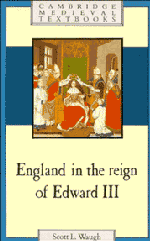Book contents
- Frontmatter
- Contents
- List of figures and tables
- Acknowledgements
- Map 1 Towns and villages mentioned in Chapters 3–6
- Map 2 Ecclesiastical sites mentioned in Chapter 9
- Part I Overview
- Part II Economic challenges
- 3 The peasant family and village society
- 4 Markets and towns
- 5 Overseas trade: wool and taxes
- 6 Economic change
- 7 The landlords' response
- Part III Government and communities
- Part IV Politics
- Glossary
- Bibliography
- Index
5 - Overseas trade: wool and taxes
Published online by Cambridge University Press: 05 June 2012
- Frontmatter
- Contents
- List of figures and tables
- Acknowledgements
- Map 1 Towns and villages mentioned in Chapters 3–6
- Map 2 Ecclesiastical sites mentioned in Chapter 9
- Part I Overview
- Part II Economic challenges
- 3 The peasant family and village society
- 4 Markets and towns
- 5 Overseas trade: wool and taxes
- 6 Economic change
- 7 The landlords' response
- Part III Government and communities
- Part IV Politics
- Glossary
- Bibliography
- Index
Summary
Imports and exports broadened England's commercial horizons. Wool in particular gave England a major role in international trade and generated handsome profits for producers and merchants alike. By the early fourteenth century, Europe's local economies had intertwined. The precocious urbanization and textile manufacturing of northern Italy and Flanders depended for their prosperity, indeed survival, on regular supplies of raw materials as well as on markets through which finished cloth could be sold. The volume of business transactions had grown enormously.
Yet the importance of the wool trade was not solely economic. The appetites of governments had grown apace. Kings and princes, whose need for funding seemed insatiable, looked to merchants for loans and taxed trade. When they could not gain what they wanted legitimately, they resorted to force or extortion, holding trade hostage to political objectives. Edwardian England resorted to all of these ploys. It offers a good example of how fourteenth-century governments manipulated trade to forward their policies. England's overseas trade will therefore be examined by looking firstly at the wool trade from sheep raising to the export of wool and secondly at the fluctuations of the wool trade with particular emphasis on the crown's manipulation of exports. It underscores the point that after 1300, participation in the wool trade was so universal in English society that heavy-handed tactics by the crown to raise money incited political reaction.
- Type
- Chapter
- Information
- England in the Reign of Edward III , pp. 58 - 75Publisher: Cambridge University PressPrint publication year: 1991

